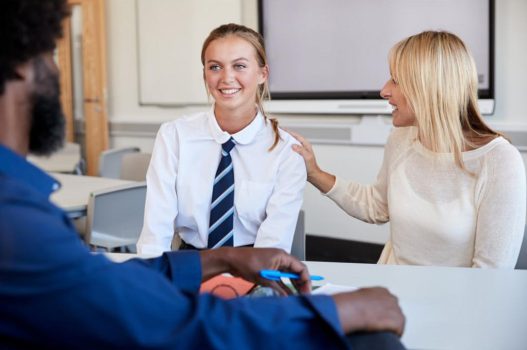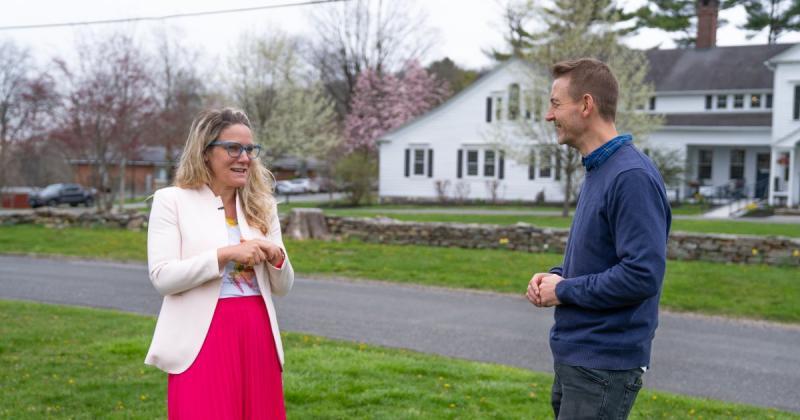Parent communication has always been a time-consuming issue for schools – but the COVID pandemic made it a more pressing one. With teachers unable to have quick chats with parents at the start or end of the school day, and with a lot of vital information to convey, schools have adapted and innovated.
This blog highlights many of these great new ideas – and suggests four factors schools should use to evaluate and take the best of them forward when the pandemic is over.
What used to happen?
Much parental communication in many schools was highly informal – with parents dropping notes to teachers in school bags and talking through issues at drop-off or pick-up time! Most schools produced a regular newsletter and many have more recently used social media to showcase good news from the school. And then there are more formal events – parents’ evenings for current pupils and open days or guided tours for those thinking of joining the school as well as regular invitations to attend assemblies, productions, and other events.
What changes have happened?
Many schools have tried various tools to move on from the traditional ones listed above, but the COVID epidemic has rapidly accelerated the process. Even when pupils have been in school, parents have been kept from school premises, events have been cancelled and all home-school communication has become digital.
This ‘new normal’ has seen the following ways of communicating with parents become common in schools – and I’m sure there are many more innovations in other schools!
- Digital classwork – whether done at home or school, completed work is now shared through platforms such as ClassDojo, Seesaw or Microsoft Teams rather than sent home in school bags.
- Parent surveys – for information gathering (such as asking parents if they are critical workers), many schools have turned to online surveys – either using platforms such as SurveyMonkey or creating their own through the likes of Google Forms or Jotforms.
- Social news – rather than printed letters, schools are using Facebook Live or other social media tools to inform parents of the latest news and events and sharing updates via range of apps such as ParentMail.
- ‘Zoom meetings’ – events that would have brought parents together such as safeguarding information evenings or curriculum updates have been replaced by online gatherings – often using Zoom, Teams or Hangouts.
- Video updates – teachers and pupils have come together to share videos – whether for information, to celebrate events such Christmas, or just to raise morale! These can also replace assemblies in school as they can be streamed to different classrooms.
- Remote parents’ evenings – building on individual meetings, solutions such as SchoolCloud allow teachers to switch between parents as they would in a face-to-face meeting
- Virtual tours – perhaps the ultimate digital change, schools can now create digital walkthroughs that replace tours and allow prospective parents to see all areas of the school.
What should schools keep doing?
There’s a lot of pressure on schools to do everything remotely at the moment. As conditions change, it will be important not to waste this work – but at the same time not to try to duplicate everything.
So schools should, when time allows, take a step back and work out what works best. For example, anecdotally I know that some schools are reporting higher levels of parental engagement and satisfaction from remote parents’ evenings. Rather than having to travel to school for a short meeting, parents like being able to fit this into their evening schedule. However, as other parents prefer face-to-face meetings you might choose to alternate these options?
When you look at future communication choices there are four dimensions to consider…
- Efficiency
Does this communication method make good use of time? For example, a series of written letters will take up a lot more time than updating one page on a website. It’s also important to consider how to reuse content – if for example you create assemblies on video you can share it with current and future parents via your website and social media as well as those pupils and parents who are in school to see it.
A content calendar (a plan of which stories you will share each week across a half-term or term) is a great help when trying to make things as efficient as possible.
- Effectiveness
Does anyone use and respond to your communications? Many digital communication tools such as electronic newsletters and social media will automatically let you know how many people are reading something. As well as this you should also consider engagement – how many people respond to your messages or pass them onto their wider community. A final way to gauge effectiveness is to survey parents and ask them to compare different communication methods – which do they prefer?
- Cost
Are you spending more than you need to? It’s important to take all costs into account. Look at who is involved and the training and support time required going forward. Of course, if you’ve already spent money on an expensive digital solution such as a virtual tour, or trained a member of staff in video production, don’t waste this next year, even if you are able to offer face-to-face visits. For example, you could send a link to your virtual tour after a personal visit – helping prospective parents remember all the great things about your school.
- Safeguarding
Are staff, pupils and parents properly protected and have they given the right permissions? There’s been a lot of confusion over digital communication and safeguarding during the pandemic given the speed of movement to online learning – for example whether pupils can use video in lessons or whether teachers can make calls home from their own phones. It’s important that each school assesses any such risks and applies its own safeguarding policy – but without being too rigid and losing the opportunity to innovate!
Read more here…


![[PODCAST] How TABS Is Re-Branding Boarding Schools](https://www.schoolhouse.agency/wp-content/uploads/2021/08/PODCAST-How-TABS-Is-Re-Branding-Boarding-Schools.png)



